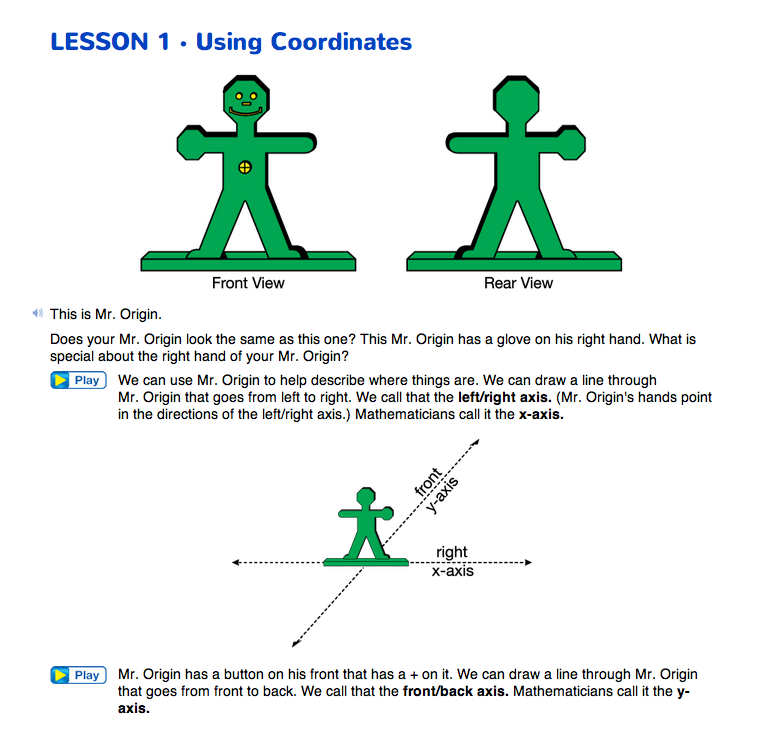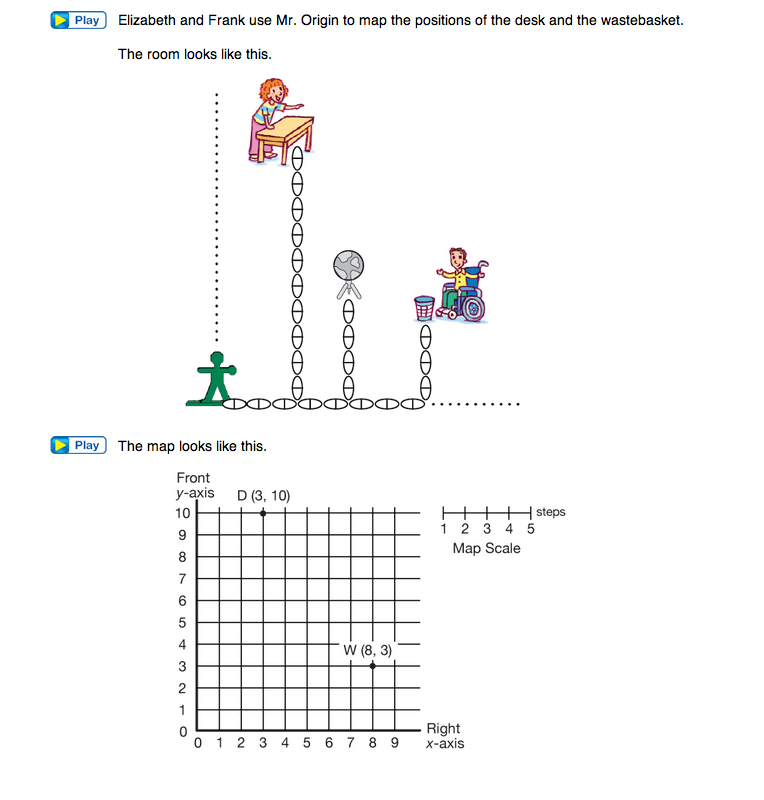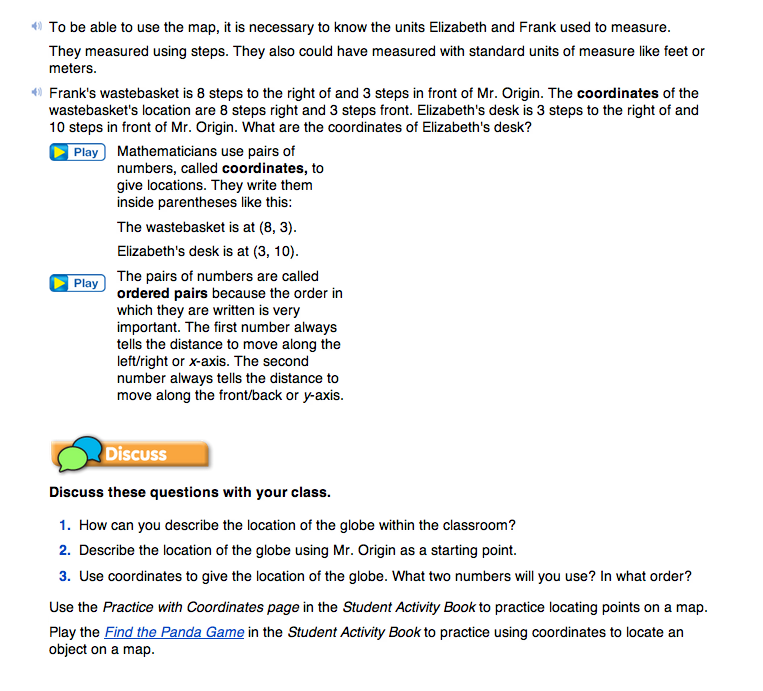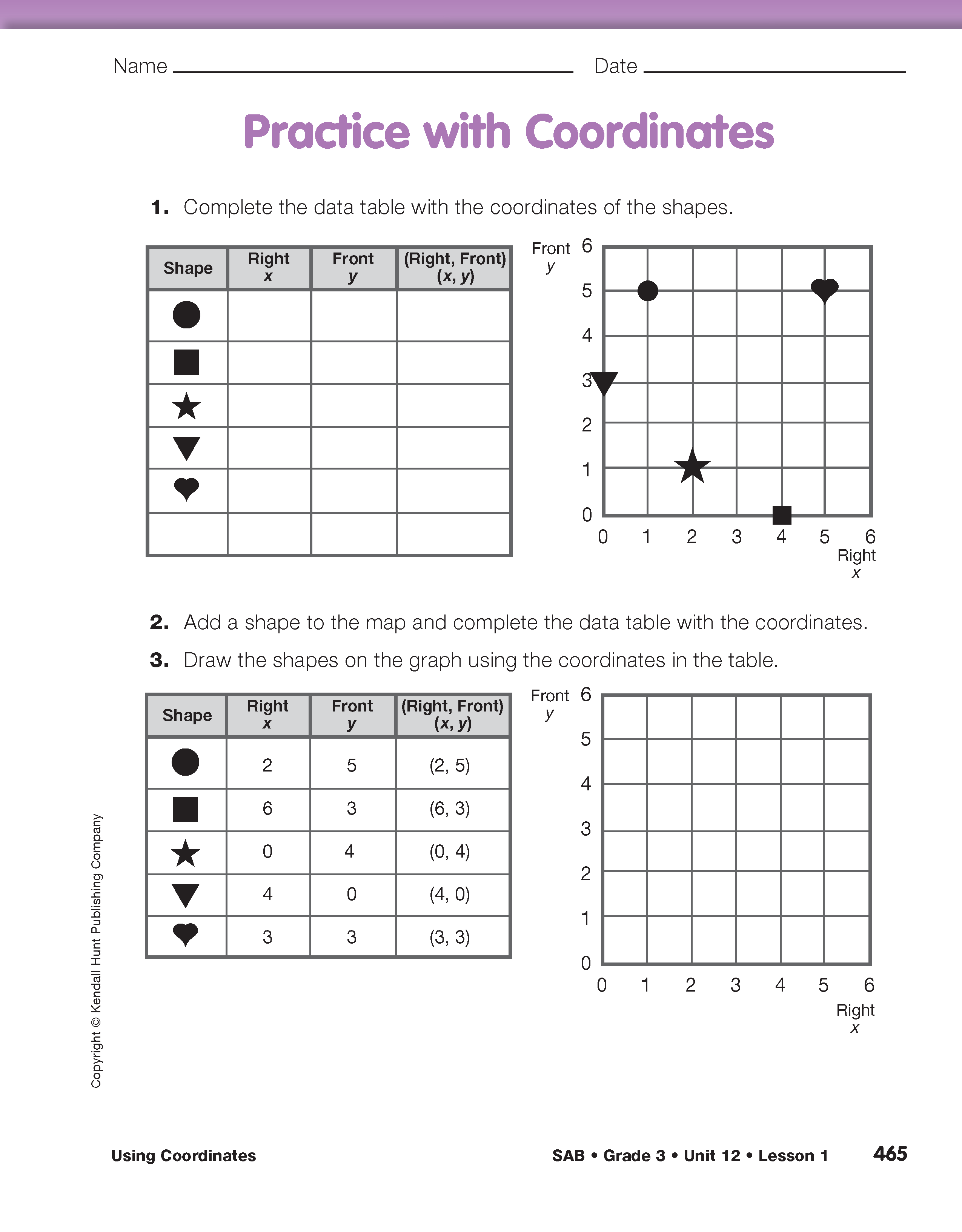Using Coordinates
Est. Class Sessions: 1–2Developing the Lesson
Introduce Mr. Origin. Mr. Origin is used to help students understand how to use coordinates (ordered pairs) to describe distance and location in the real world, on maps, and with graphs. To introduce Mr. Origin to the class, have students read the Using Coordinates pages in the Student Guide.
Use these or similar discussion prompts to begin a class discussion:
The fundamental idea is that students can find all directions and distances relative to Mr. Origin rather than relative to themselves. The Using Coordinates pages also introduce students to locating objects using left/right (x) and front/back (y).
Use Questions 1–3 in the Student Guide to check for understanding. To answer Question 1, students can describe the location of the globe by saying that it is between the wastebasket and Elizabeth's desk. Using Mr. Origin as the starting point in Question 2, the globe is five steps to the right of Mr. Origin and four steps to the front. As an ordered pair, students can write (5, 4). It is important to note the unit of measure in some way. On the map in the Student Guide, the fact that the measurements are in steps is noted on the scale.
Assign Check–In: Questions 1–3 on the Practice with Coordinates page in the Student Activity Book. Students complete these questions independently, using coordinates to label the location of objects on a map and placing items on a map when given their coordinates.
Classroom Treasure Hunt with Mr. Origin. After you have introduced Mr. Origin and students have had opportunities to practice finding objects on a map, tell them that you found a note from a clever pirate that tells where a treasure is hidden in the room. Show students the Treasure Hunt Note page that you prepared before the lesson. Read the message from Pirate Jack out loud or ask one of the students to read the message to the class. Ask students to work with their partner to decide what the clues Pirate Jack left could be.
The discussion prompt can be used to help them begin talking with their partner:
Provide time for students to work with their partners to formulate questions on their own. Encourage them to use their Student Guide as a resource to help guide their thinking. As student groups work, these discussion prompts can be used to provide support as needed:
Ask:
Provide students with the first clue by placing Mr. Origin in the appropriate place.
Continue the discussion by asking:
Give students the second clue, telling them what the unit of measure will be for the treasure hunt.
Have a student use the coordinates in the Treasure Hunt Note to measure from Mr. Origin. He or she will find Pirate Jack's Message and read it aloud to the class. Using the coordinates written in the new message, students can find the treasure by measuring with the correct units to the right and in front of Mr. Origin.


















